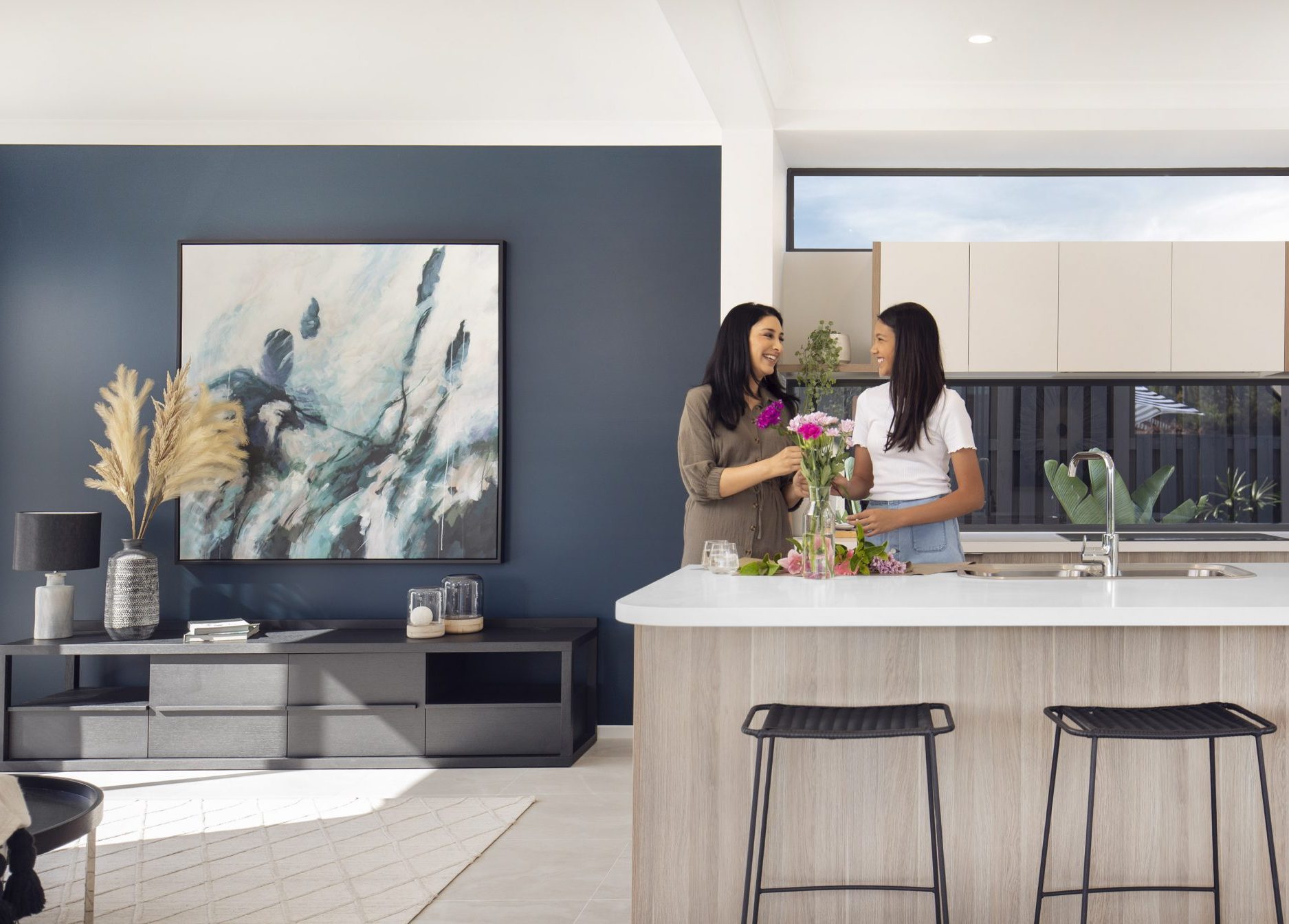What to consider when planning your custom home design

Starting your custom home journey can seem daunting and overly expensive at first glance, but with the right builder this process can be seamless and much less costly than you think.
Over the years Ownit Homes has built a wealth of experience in creating achievable custom residences, so we’ve put together our top tips for those considering their first custom home build project.
1 – Know your budget
Work with your financial planner, bank or financial expert to determine how much you can comfortably afford to spend. In addition to the contract price of the home, you may also want to consider the ‘extra’ items to ‘finish’ your home such as furnishings, whitegoods and decorative items in this total as well. It’s also very important to factor in pre-construction, site and access costs as best you can.
To get started, have an expert conduct a comprehensive assessment of your block and complete soil testing so that you can get an accurate as possible picture before beginning your project. From over a decade of experience, we find some common questions to consider include:
Do you need to knock down an existing home?
A general range of $15,000 – $40,000 could apply to demolition. Make sure you ask about options to recycle materials or sell the home to a house remover to save extra cash or even make some money.
Does your block have good access for trucks, cranes and construction equipment?
If your home is on a main road, on a very narrow block or does not have access to street parking, you may need to consider additional access costs throughout your build.
Is there anything lurking beyond the surface?
It is important to conduct soil testing and have your block assessed to understand what is under the surface as best as possible. We’ve previously encountered things like old footings, tree roots and urbanware pipes – even cars! The earlier your block can be assessed, the better.
How much slope does your block have?
Rule of thumb: The more level the land, the more affordable to build on! Some builders may be unable to build on blocks that have substantial fall or be limited in the type of home they can build for you.
2 – Choose your level of inclusions
The colours and finishes you choose for your home are what bring it to life and make it distinctly yours. The level of inclusions that you choose for your new home will be dependent on your lifestyle, budget and possibly how long you intend to live in (or rent) your home. We suggest making a list of “must haves” and “nice to haves” to help guide your decision making and compare inclusions between builders. For example; as someone who enjoys home cooking, high quality 900mm appliances and stone benchtops might be at the top of your list.
You may also want to consider if a full “turn key” package is the right option for you. Turn key packages include things that ‘finish’ your home such as flooring, air-conditioning, driveways and turf. Some people prefer to install these items themselves or in their own time, whilst others prefer the convenience of having their home “move-in ready”.
3 – Consider your dream lifestyle
You’ll probably have a good idea of how many bedrooms and living areas you want, but have a good think about how your new home will complement your lifestyle now and into the future. For example, do you need a guest room with ensuite when interstate family and friends come to stay? Do you need separate living areas and private study spaces for your expanding family? Will you need a space to work from home in the future? Sometimes it’s the small things like storage or how far it is to walk from the garage to the pantry with a stack of groceries!
Thinking about how you enjoy spending your time, how you want your home to compliment your daily routines and how you want your home to feel will all help to guide your overall design.
4 – Create a scrapbook
Keeping a visual record of what you like is the best way to communicate your vision to the designer. Magazine clippings, Pintrest boards or photographs of special holidays are all great ways of putting together your mood board and achieving your dream look and feel.
5 – Aspect
It is highly recommended you select a block that has the entertaining area facing to the north. In the Southern Hemisphere and in the Queensland climate, north facing for living areas is more preferable as you will not have to encounter the harsh East or Western sun.
From design to construction, concept to completion, choosing a custom design will result in a dream home that is perfectly matched to your lifestyle and budget. Make an appointment to discuss your custom floorplan with one of our Building Consultants today and live the way you want with Ownit Homes.